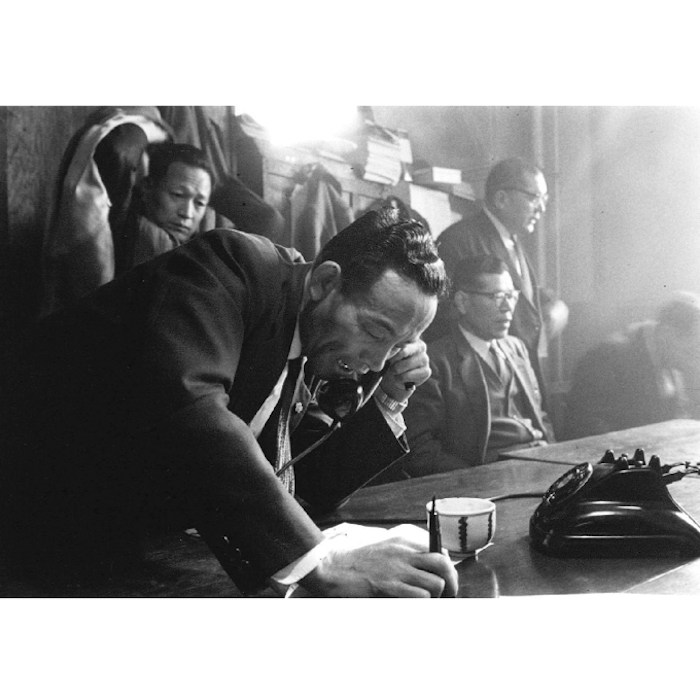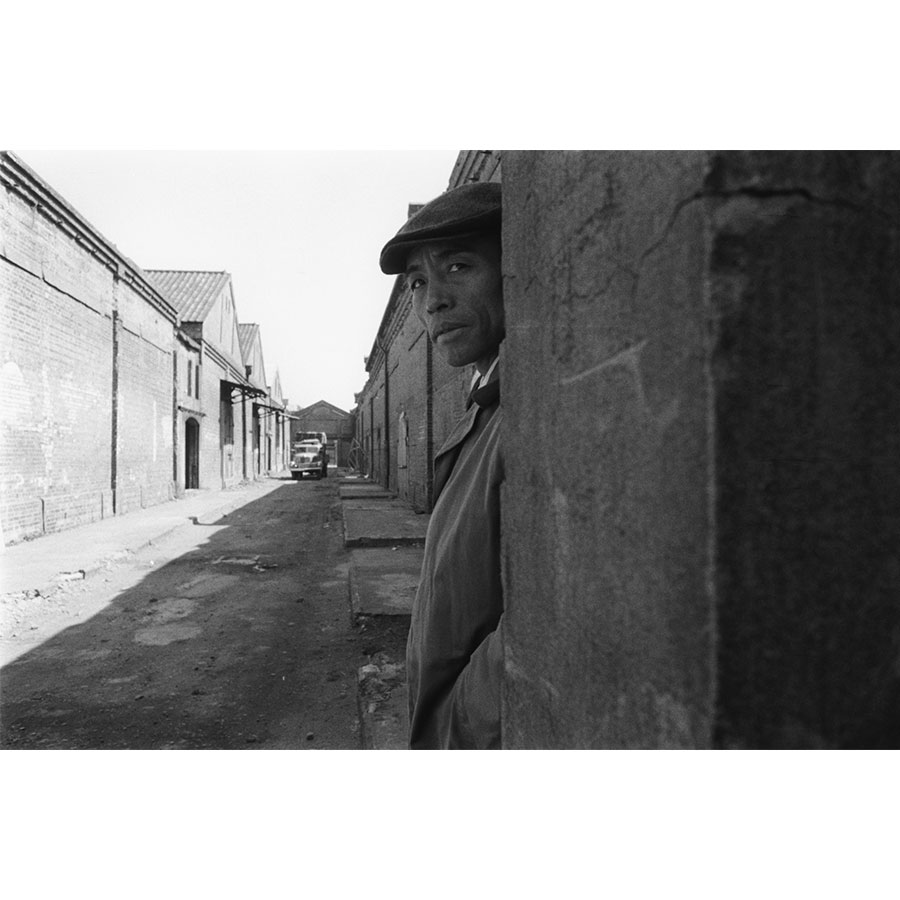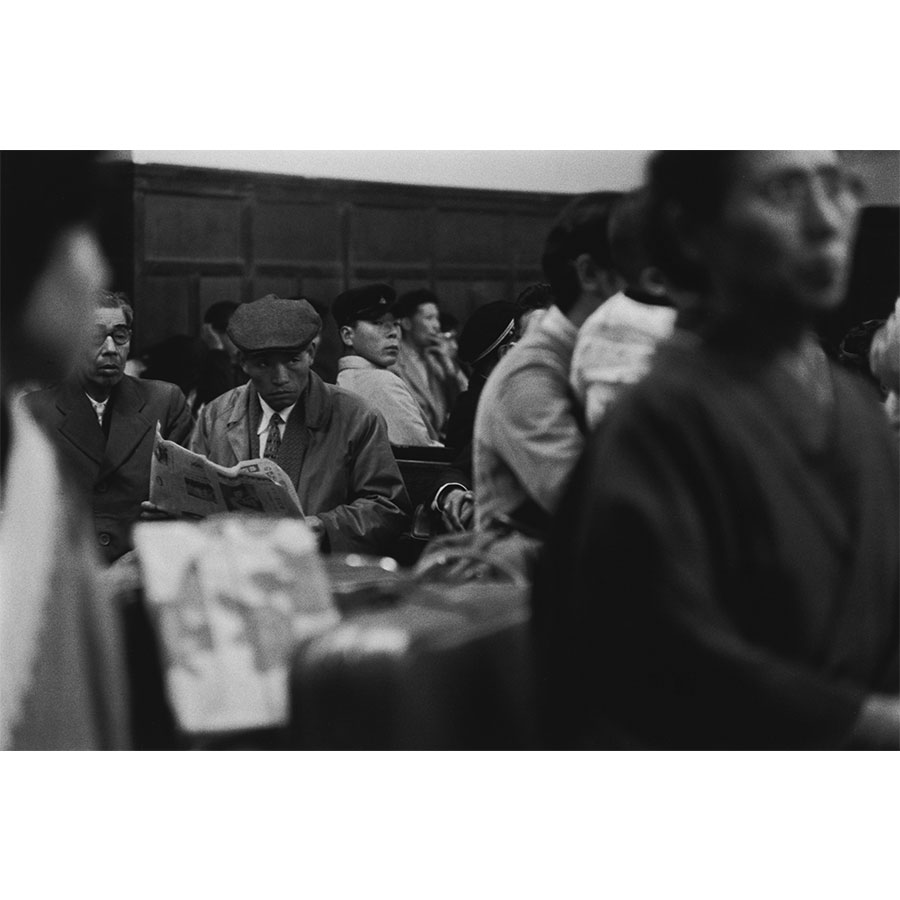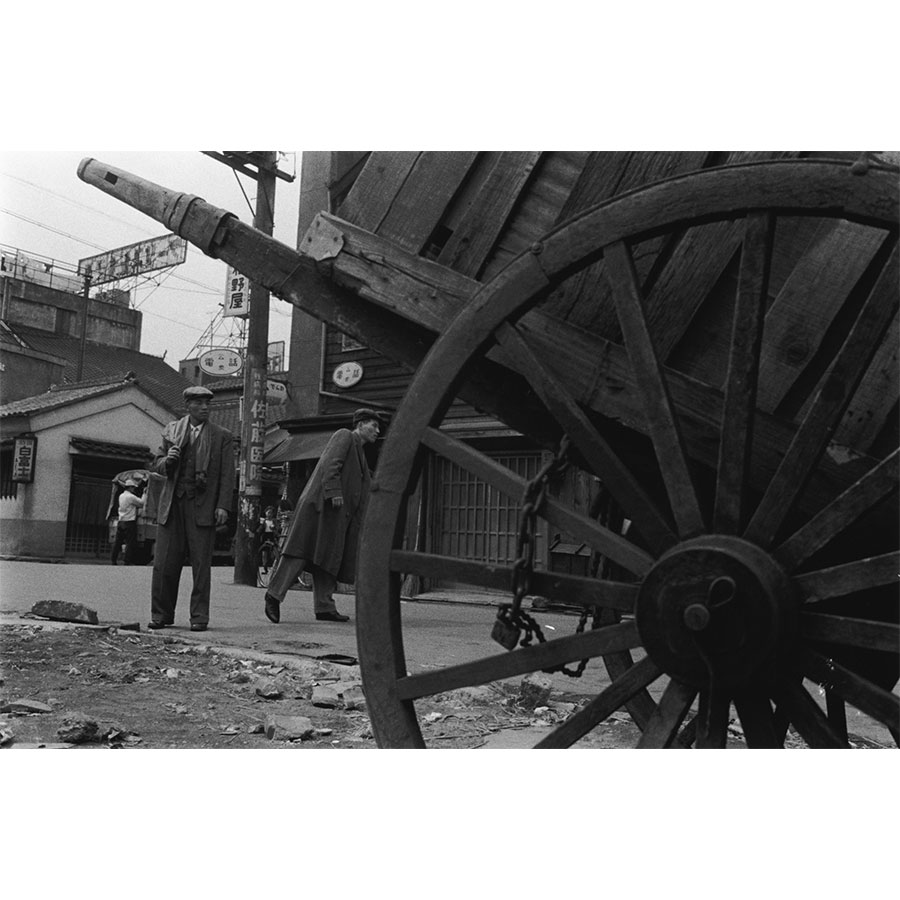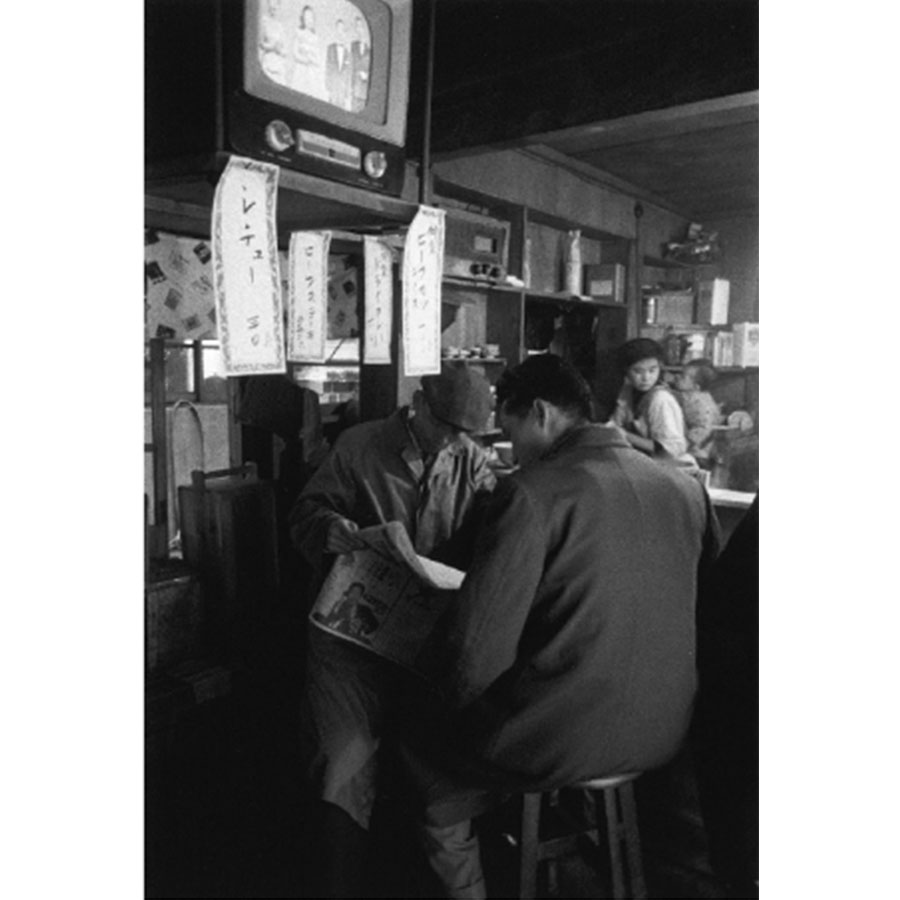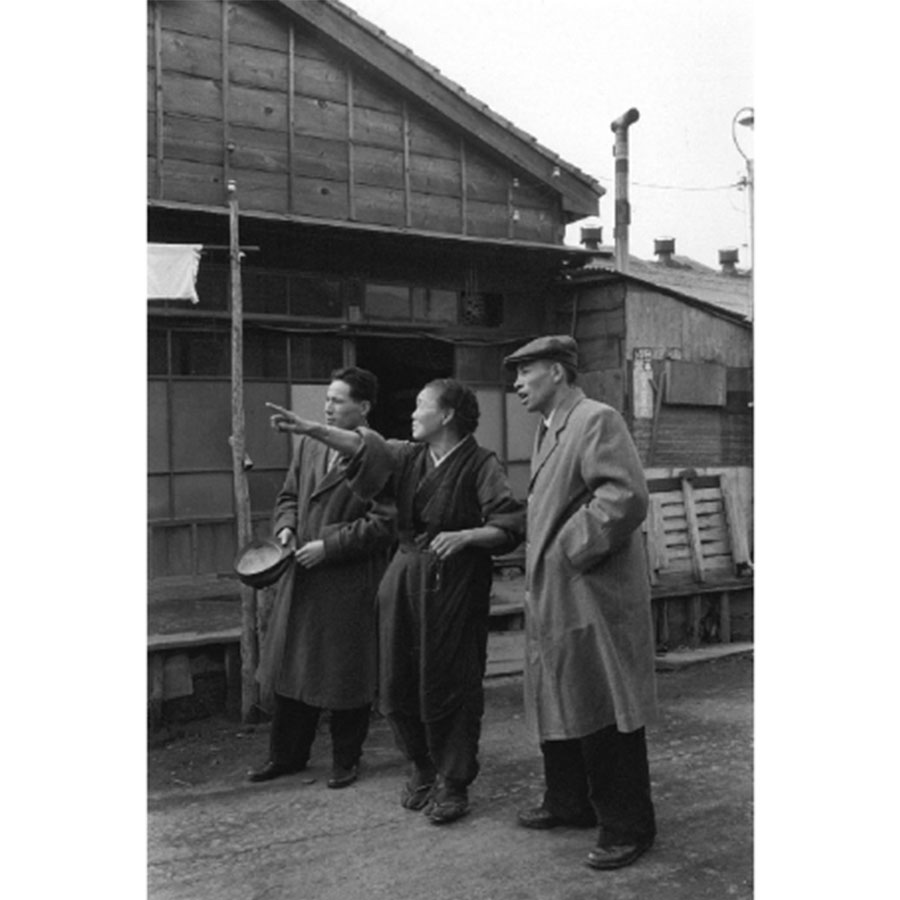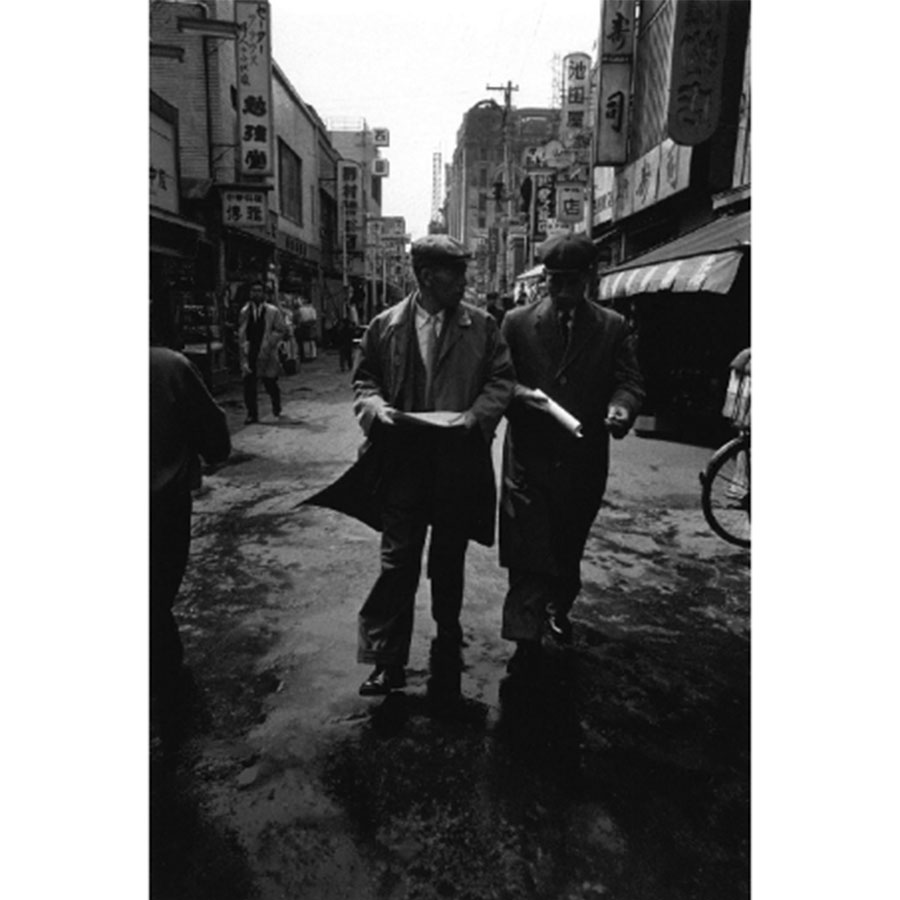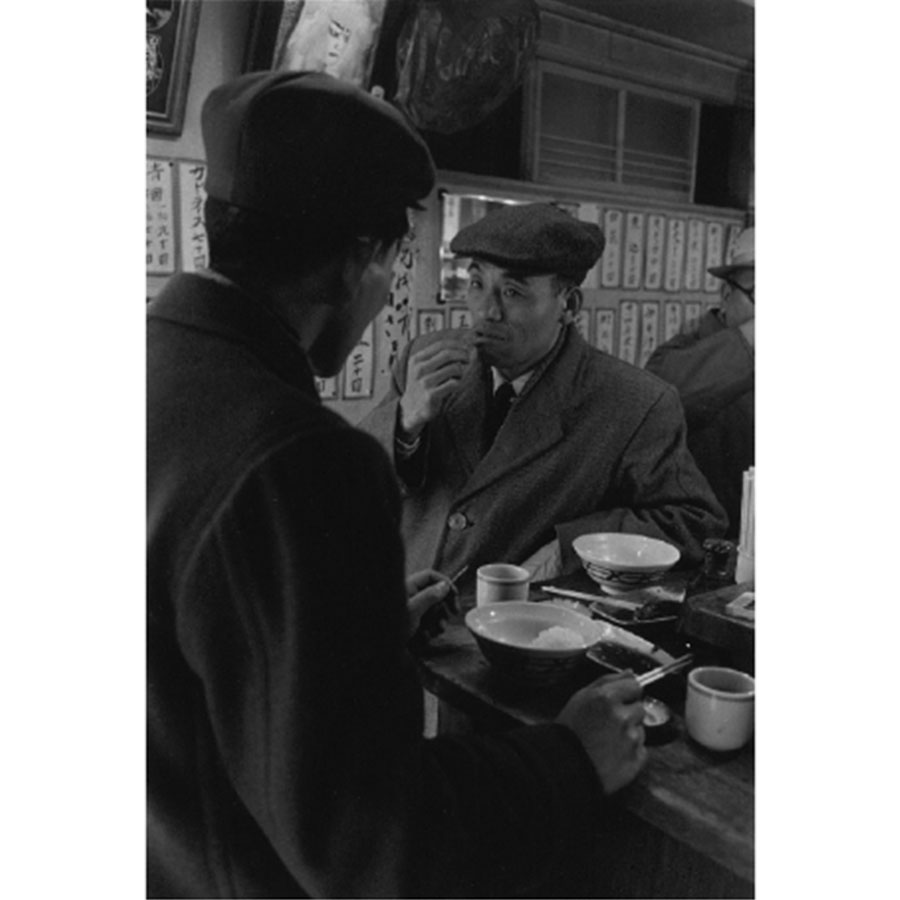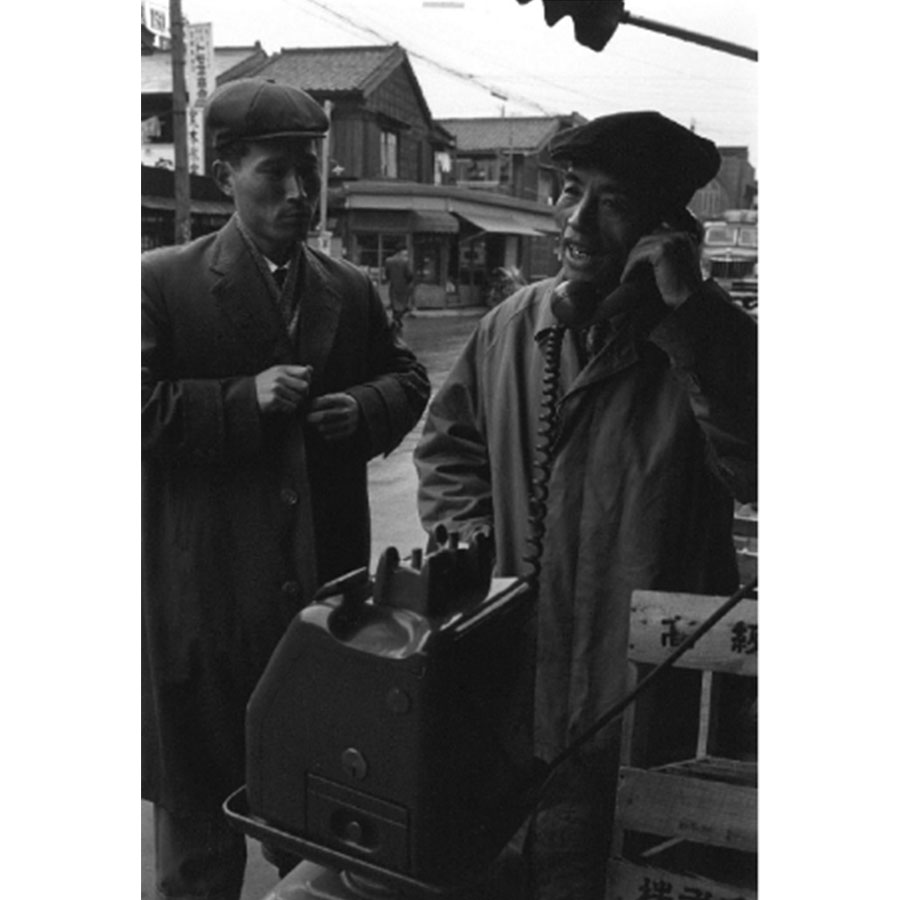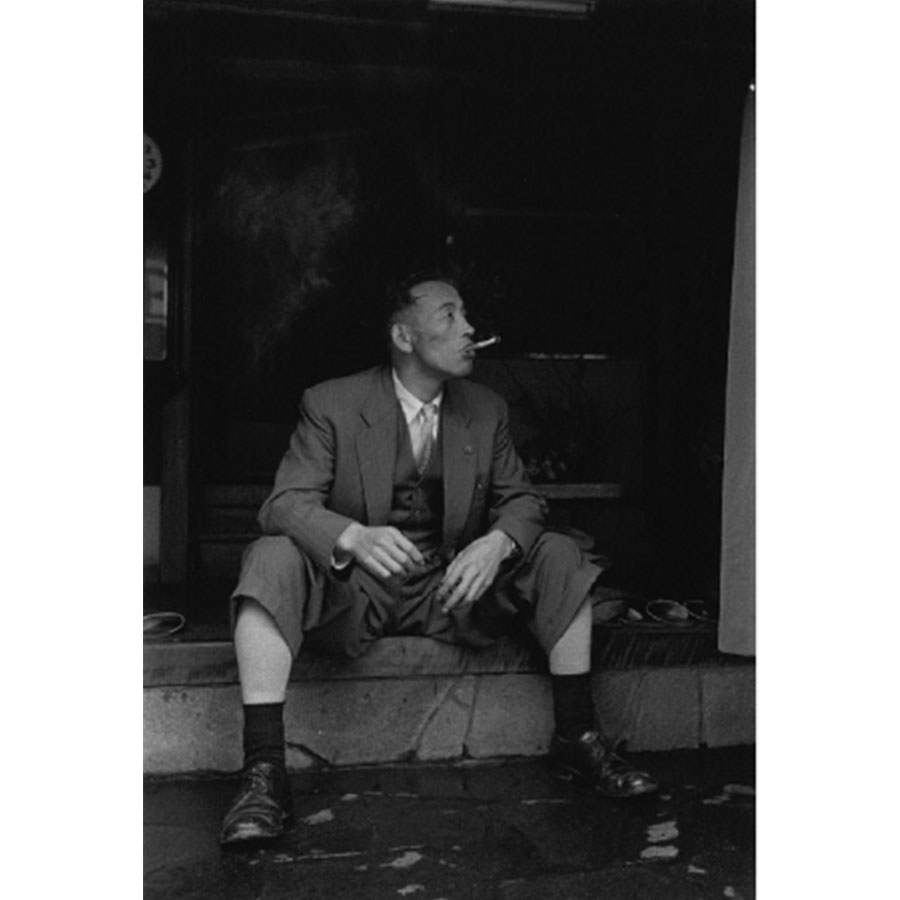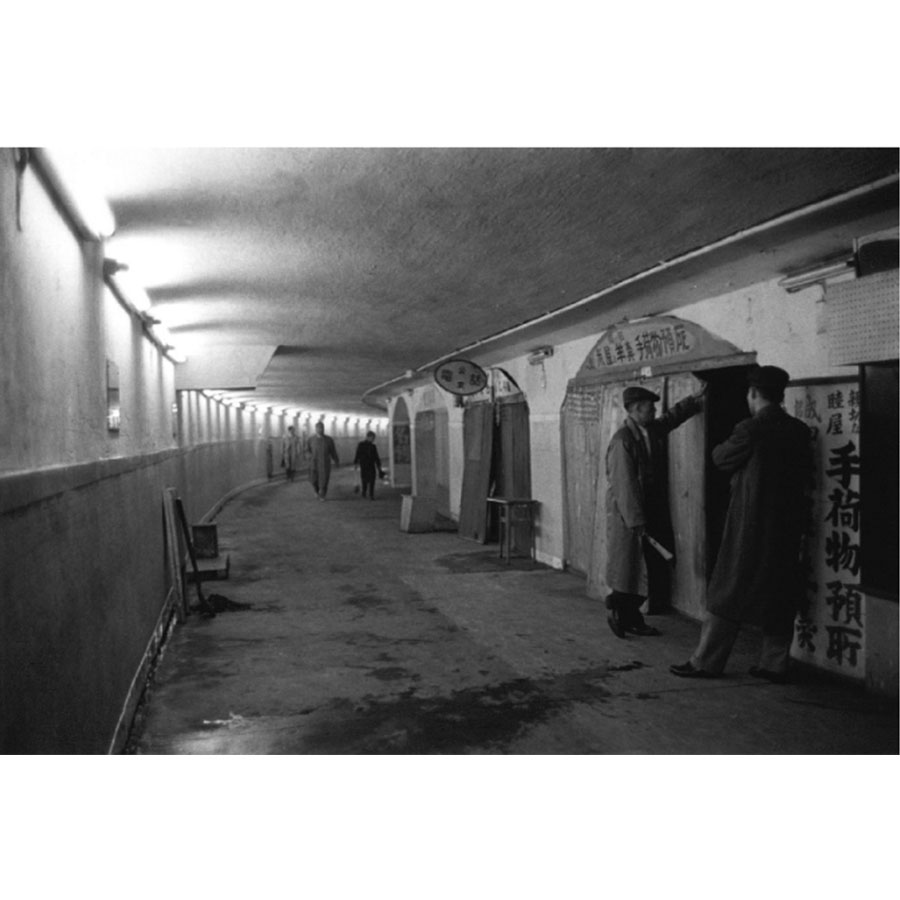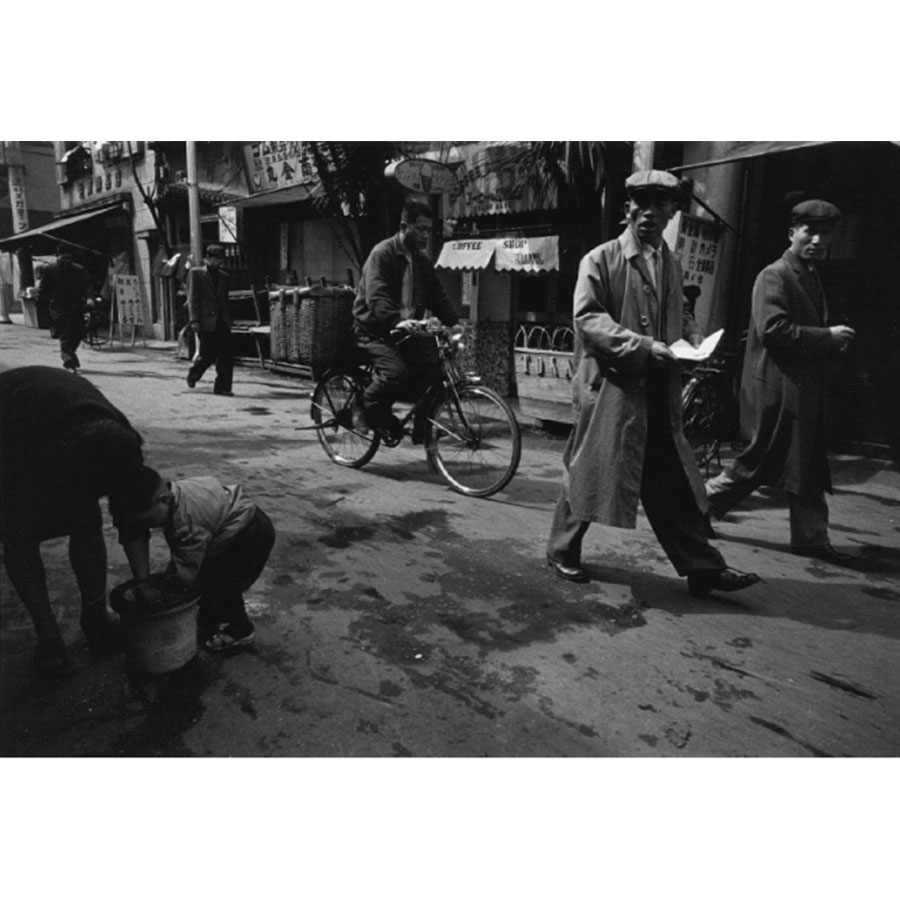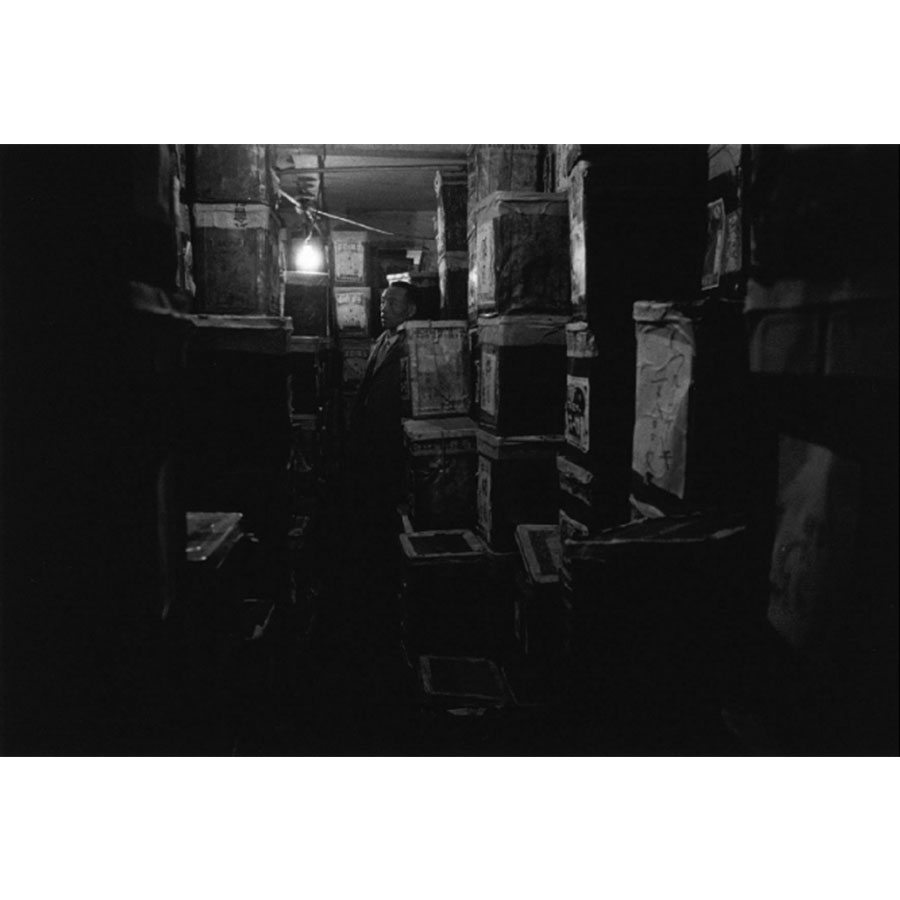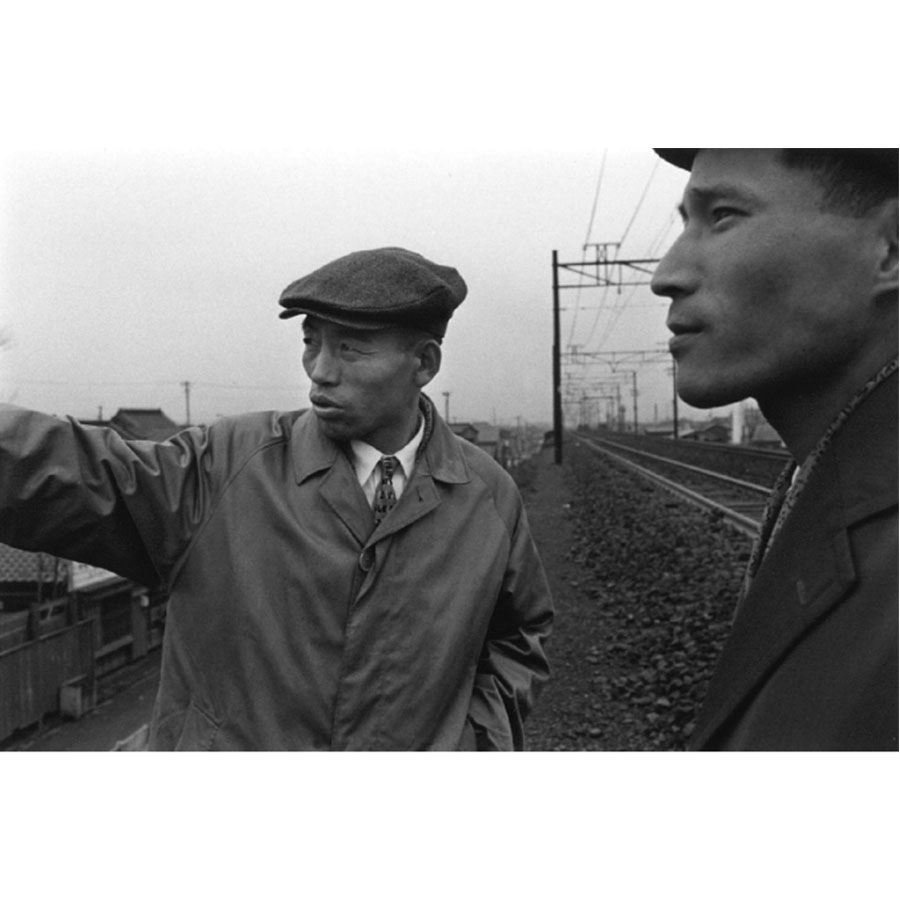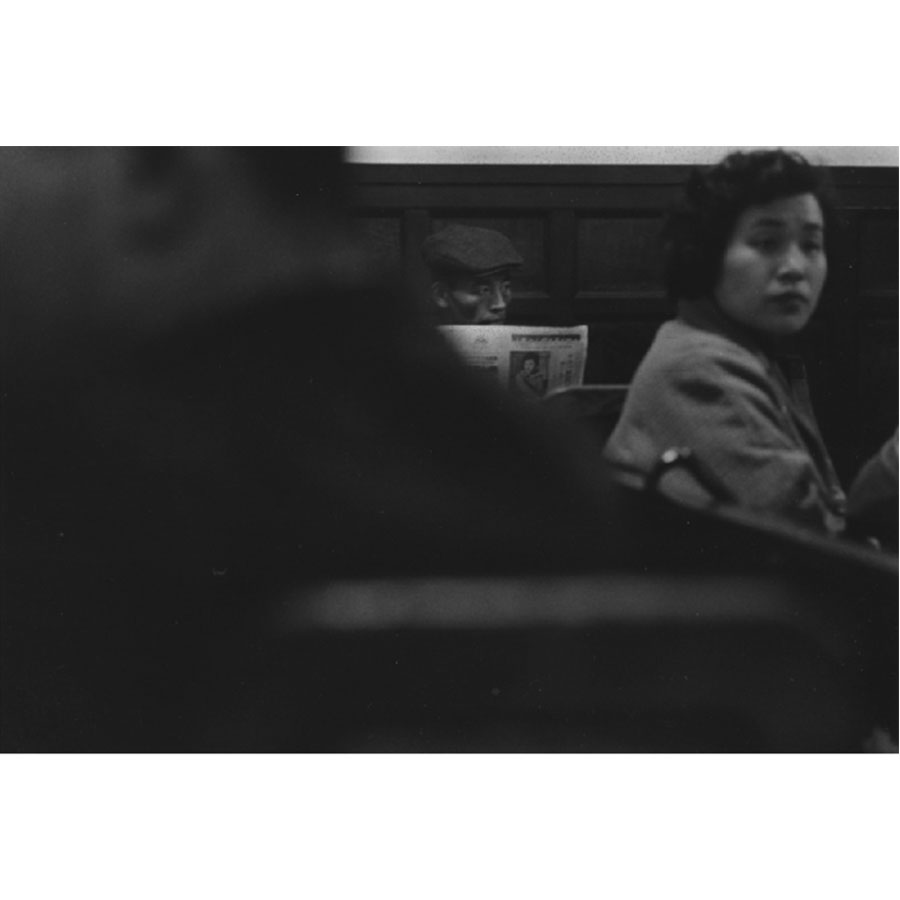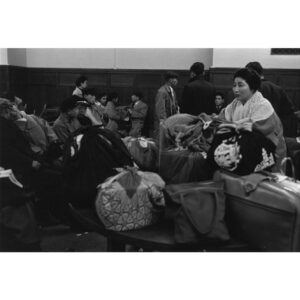Your cart is currently empty!
Yukichi WATABE
Record Vol. 18
STAKEOUT DIARY
Du 3 Septembre au 20 Octobre 2015
Vernissage : le 3 Septembre du 19h à 22h
Commissaire: Sophie Cavaliero, Luigi Clavareau, Xavier Gautruche, Gilles Roudière
Un projet en collaboration avec: Hiroyuki Watabe et Atsushi Saito « Roshin Books roshinbooks.com »
Organisé par: in)(between. gallery
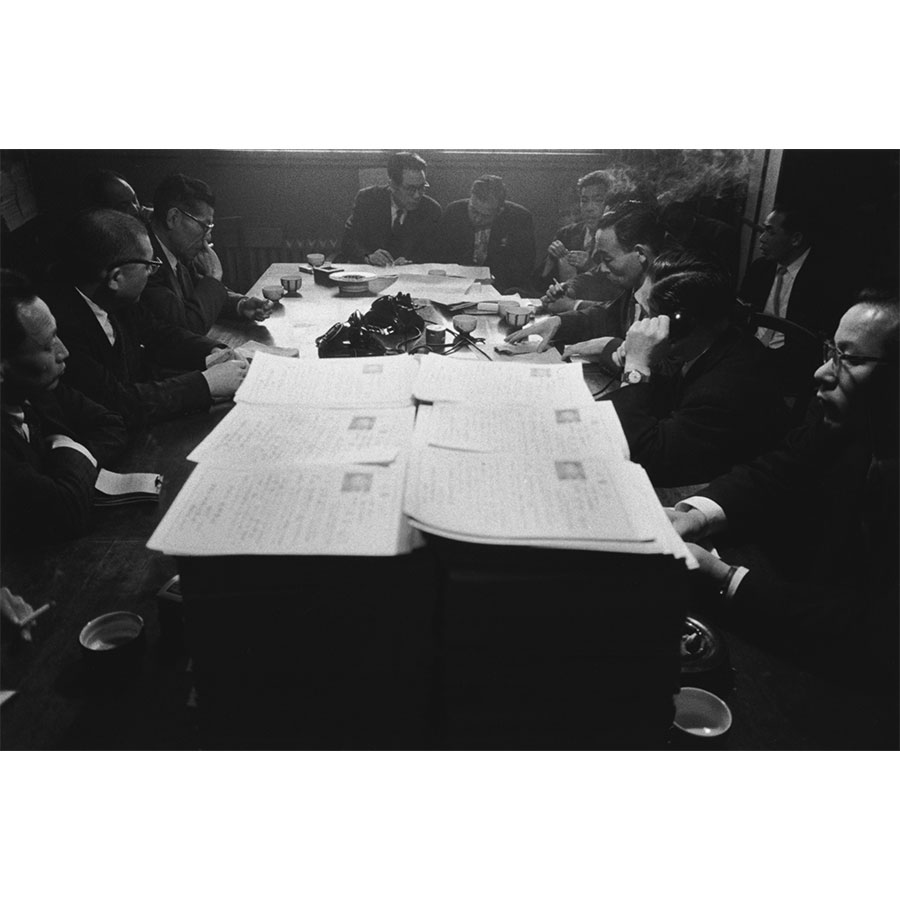
in)(between record vol. 18
STAKEOUT DIARY
For the first time in Europe, an exhibition is entirely dedicated to the photojournalism STAKEOUT DIARY by Yukichi Watabe. Among the 50 images exhibited, the in)(between gallery exclusively presents 10 prints never before shown to the public.
Yukichi Watabe is the first Japanese photographer to have obtained authorization to accompany the police to document a criminal investigation: “the severed body affair”. On January 13, 1958, human remains were discovered not far from Lake Sembako in an oil tank: two phalanges, a nose and a penis. The next day, the police found a disfigured, emasculated and acid-eaten corpse. The affair which seemed trivial at first glance is stalling. Two investigators are dispatched from Tokyo to assist the local police: Tsutomu Mukaida, chief of Tokyo police prefecture and Katsumi Midorikawa, police inspector of Ibaraki prefecture.
Invited to follow the chief inspector in his work, Yukichi Watabe takes us behind the scenes of a sordid news story and lifts the veil on a universe imbued with the aesthetics of film noir. The subject of the report is neither the murderer nor the victim, but the investigation itself. Tsutomu Mukaida plays the main role. Wearing a suit topped with a large Bogart-style raincoat, an English cap screwed on his head, he crosses the streets of the red-light districts around Tokyo and Ibaraki with a cigarette in his mouth. Yukichi Watabe follows him in his daily wanderings and remembers the interrogations, note-taking, and phone calls.
But more than just a window into the investigation carried out by Tsutomu Mukaida and Katsumi Midorikawa, these images have extraordinary documentary value. Japan in the 1950s has rarely been shown in this light. We discover a devastated landscape, bruised by the traumas of defeat and occupation, but also crossed by the changes initiated by the end of the Second World War. Despite economic growth, the Japanese are deeply marked by the wounds of war. Many of them then fall into physical and moral misery. Yukichi Watabe gives us access to one of the periods with the greatest number of sordid crimes, atrocious murders and child abductions. His report constitutes a unique document of its kind testifying to daily Japanese life in the post-war period.
in)(between record vol. xx
STAKEOUT DIARY
Pour la première fois en Europe, une exposition est entièrement dédiée au photoreportage STAKEOUT DIARY de Yukichi Watabe. Parmi les 50 images exposées, la galerie in)(between présente en exclusivité 10 tirages jamais montrés au public.
Yukichi Watabe est le premier photographe japonais à avoir obtenu l’autorisation d’accompagner la police pour documenter une enquête criminelle : “l’affaire du corps coupé”. Le 13 janvier 1958, on découvre non loin du lac Sembako des restes humains dans un bac à huile : deux phalanges, un nez et un pénis. La police retrouve le lendemain un cadavre défiguré, émasculé et rongé par l’acide. L’affaire qui paraissait a priori banale piétine. Deux enquêteurs sont dépêchés de Tokyo pour prêter main forte à la police locale : Tsutomu Mukaida, chef de la préfecture de police de Tokyo et Katsumi Midorikawa, inspecteur de police de la préfecture d’Ibaraki.
Invité à suivre l’inspecteur en chef dans son travail, Yukichi Watabe nous fait pénétrer dans les coulisses d’un fait-divers sordide et lève le voile sur un univers empreint de l’esthétique des films noirs. Le sujet du reportage n’est ni le meurtrier ni la victime, mais l’enquête elle-même. Tsutomu Mukaida y tient le rôle principal. Revêtu d’un costume surmonté d’un grand imper à la Bogart, une casquette anglaise vissée sur le crâne, il traverse clope au bec les ruelles des quartiers chauds des environs de Tokyo et d’Ibaraki. Yukichi Watabe le suit dans ses pérégrinations quotidiennes et garde en mémoire les interrogatoires, prises de notes, coups de fil.
Mais plus qu’une simple fenêtre ouverte sur l’enquête menée par Tsutomu Mukaida et Katsumi Midorikawa, ces images ont une valeur documentaire extraordinaire. Le Japon des années 1950 aura rarement été montré sous ce jour. On découvre un paysage dévasté, meurtri par les traumatismes de la défaite et de l’occupation, mais également traversé par les mutations amorcées par la sortie de la Seconde Guerre mondiale. En dépit de l’essor économique, les Japonais sont vivement marqués par les blessures de la guerre. Beaucoup d’entre eux basculent alors dans la misère physique et morale. Yukichi Watabe nous donne accès à l’une des périodes qui compte le plus grand nombre de crimes sordides, de meurtres atroces et d’enlèvements d’enfants. Son reportage constitue un document unique en son genre témoignant de la vie quotidienne japonaise de l’après-guerre.

